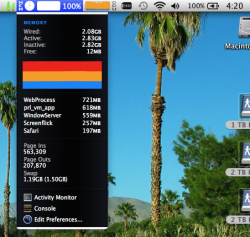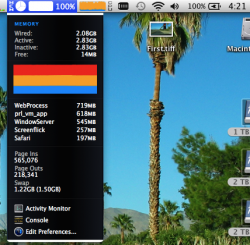So what kind of program would work like that without resetting the icons on launchpad or other OS X areas? I did find an app to "free memory" as their are apparently many, but I don't like how it resets EVERYTHING.
That is a good question. The new model of Mountain Lion programming model forces you to tell the OS what to do. If you don't tell it, it doesn't know what to do, and will treat you program like iOS does. All the old programs don't have these code to tell Mountain Lion. So you can wait for them to update to a newer version so they behave better under the new model. You probably need a program with root privilege that can undo what Mountain Lion is doing... trying to be like an iOS device.
iOS devices has about 64GB Flash at most (most people get the 16GB). They are also using Flash (like ssd), which is many times faster than regular harddrives. So what happens is that you get tiny programs that are constrained into the 256MB to 512MB RAM (about a quarter to half of 1GB), that are easily dumped (and fast too) into the flash, and loaded.
Now they are trying to use this methodology on OSX, which usually has 8GB or 16GB of RAM, and are running on harddrives (many many times slower than flash because it is mechanical with a rotating disk) that are 500GB in size no problem. I am hoping they took into consideration performance. Or will it be like the NeXT computer forcing everyone to use writable optical drives, without considering whether performance is critical, not because it is the next best thing. Or Corel trying to move wordperfect into Java. So you have programs like iMovie which can easily take up over 8GB of RAM that are "save state" into the "memory", taking up either valuable active memory or inactive memory depending on how you closed the program. Soon no matter how much memory you have it doesn't matter. All programs that ran before probably has these "stubs" hanging around (like iOS, where you double click and see a list of previous run applications) either in active or inactive memory (taking up virtual or real memory). So the OS is constantly swapping back and forth trying to deal with these memory guzzler apps (not like iOS apps that only has at most half of gigabyte).
So what does this mean? Probably in the future MacBooks will run on ARM chips, and a version of iOS, using iOS methodology. Probably because they are the breadwinners now, and dictate how the OSX's direction run... so in the future they can be merged.
So to answer your question, you probably need a new program made in Mountain Lion, has root privilege, understands the new methodology, and can wipe the inactive memory out.



